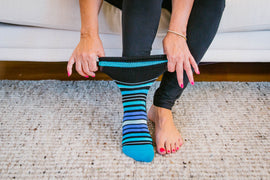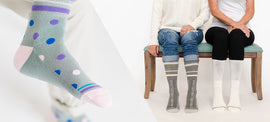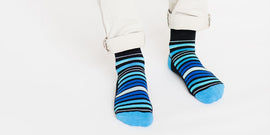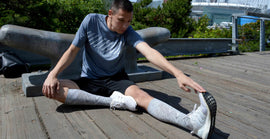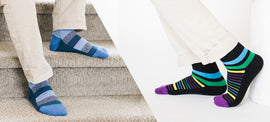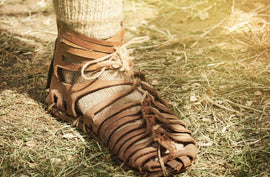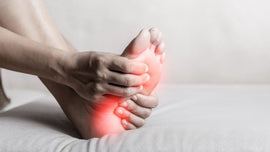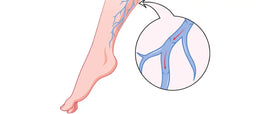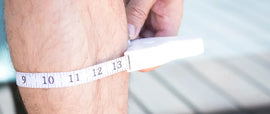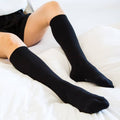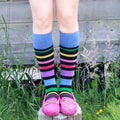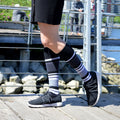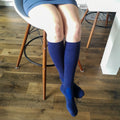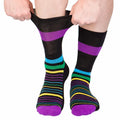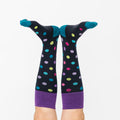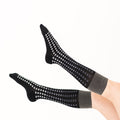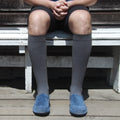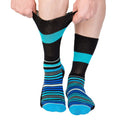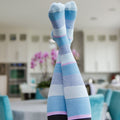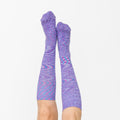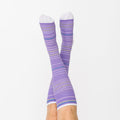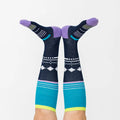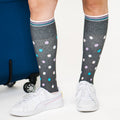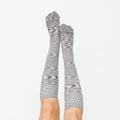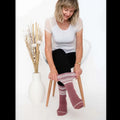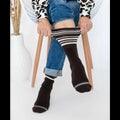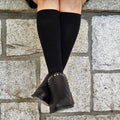Restless Leg Syndrome & Compression Socks
Posted by KELSEA FRANZKE
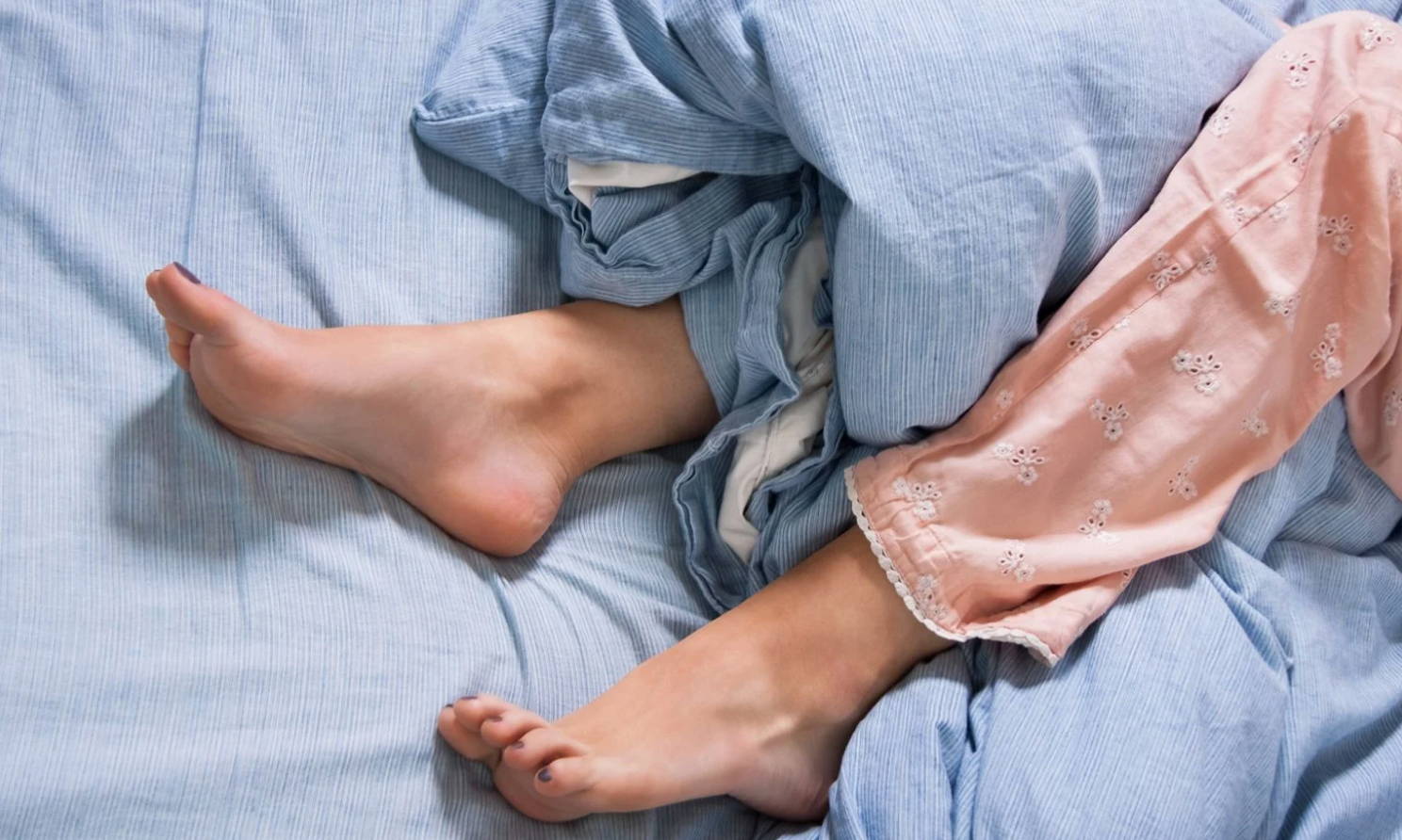
If you experience an overpowering urge to move your legs, you may have the nervous system disorder known as Restless Legs Syndrome (RLS), also known as Willis-Ekbom disease.
Treatment for RLS works to target symptoms, and if your RLS is mild to moderate, small changes to your everyday life can help! Keep reading to learn all about RLS and how to relieve its symptoms through simple changes to your lifestyle.
WHAT IS RESTLESS LEG SYNDROME?
RLS is a condition that causes an uncontrollable urge to move your legs, typically due to an uncomfortable sensation. This often occurs in the evening or nighttime when you’re sitting or lying down. Moving your legs provides temporary relief for the unpleasant feelings but does not provide long-term relief to the discomfort.
RLS can begin at any age and generally worsens over time. It often leads to a disruption of sleep which can interfere with day to day activities. There is no known cause for RLS at this time, but researchers suspect the condition may be a result of an imbalance of dopamine, a chemical in your brain responsible for sending messages that control muscle movement.
While people with RLS say that the sensations and symptoms they experience are difficult to describe, most say that they feel unpleasant sensations in their feet and legs which generally occur within the limb rather than on the skin. Sensations typically do not present as numbness or muscle cramping.
While symptoms vary, RLS sensations are often described as:
- Throbbing
- Aching
- Itching
- Pulling
- Crawling
- Creeping
- Electric
Symptoms can fluctuate in severity and in some cases symptoms disappear for long periods of time before they return.
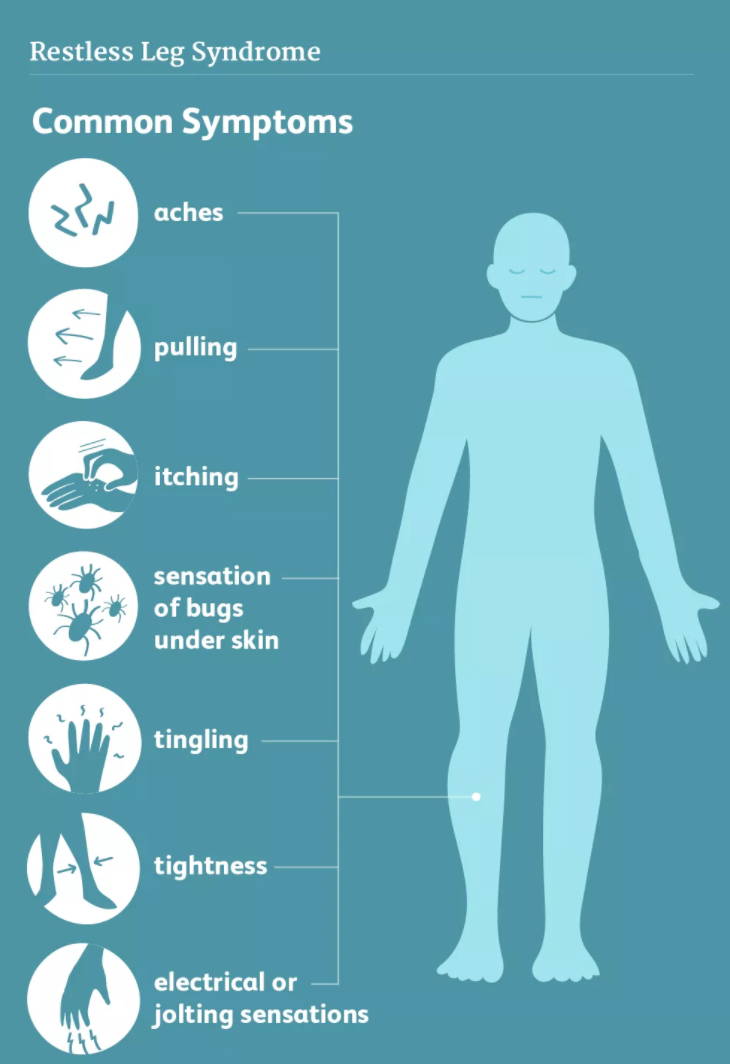
TREATING RESTLESS LEG SYNDROME:
If you have RLS without an associated condition (such as iron deficiency or kidney failure), treatment predominantly focuses on changes to your lifestyle. A doctor may prescribe medication for more serious cases.
Actions you can take to alleviate symptoms of RLS include:
1. Taking baths and massages - Massaging your legs while soaking in a warm bath can help relax muscles and provide temporary relief to discomfort.
2. Wearing Compression Socks - When pressure is applied to the legs it acts as a counter-stimuli to the discomfort experienced in the legs. According to the National Institute of Heath, since the feeling of pressure from Compression Socks is more apparent than the throbbing or itching, the level of discomfort often diminishes.
Some people with RLS report pain in their legs and wearing Compression Socks can help relieve the feeling of achiness from RLS. Dr. Segal’s Everyday Compression Socks provide the perfect level of compression for most people with RLS
3. Applying cool compresses - Using a cool compress or wrapped ice pack on your legs when experiencing symptoms may help lessen limb sensations.
4. Exercising - Moderate, regular exercise may help relieve symptoms of RLS. It is important to note, however, that doing intense workouts or exercising too late in the day may intensify symptoms experienced at night.
5. Establishing a good sleep routine - Fatigue often worsens the symptoms of RLS so it is important to establish a healthy sleep routine. Ideally, having a cool, quiet and comfortable sleeping environment supports healthy sleep hygiene. Try to establish a regular wake-up and bedtime routine and ensure you get at least seven hours of sleep each night.
Depending on the severity of your symptoms, your doctor may recommend medication to treat your RLS. Learn more about medications for RLS here
*Always speak to your physician before making decisions about your health.

TAGS:
SHARE:




